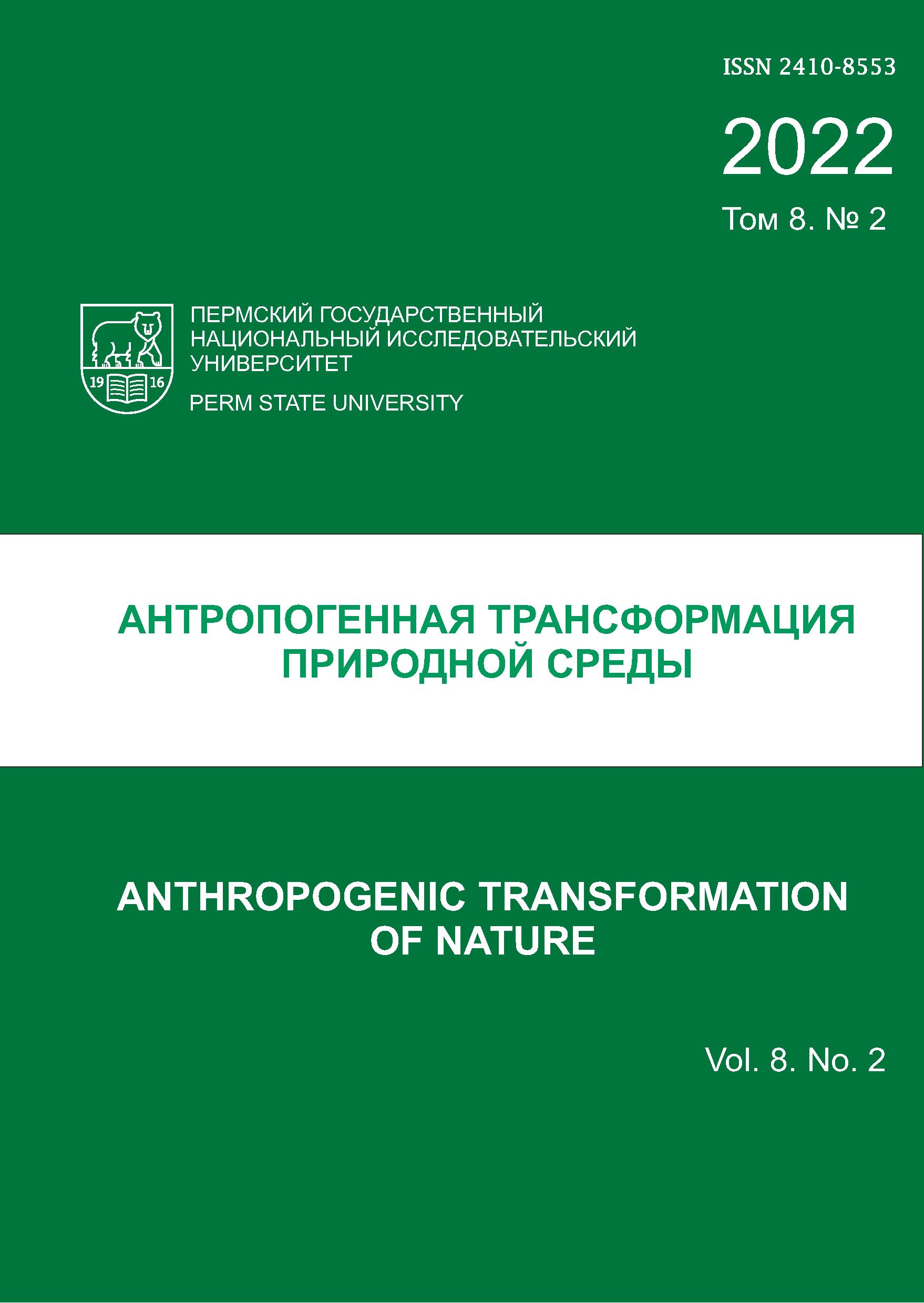Structural entropy as a measure of fractioning of mass-flows in ecosystems under the influence of transport pressure
DOI:
https://doi.org/10.17072/2410-8553-2022-2-16-38Keywords:
polycyclic aromatic hydrocarbons (PAHs), transport pressure, entropy, mass-flows, Albic Retisols (Ochric)Abstract
The features of the distribution of polycyclic aromatic hydrocarbons considered as geochemical markers of mass transfer in the structural transitions of «snow–soil–plants» of urban soil-plant systems are analyzed. The experimental impact test site is an area with an intensive transport press – the RUDN campus with an adjacent green zone (south–western district of Moscow). Spatial variability of polyarenes in media and structural transitions is chaotic. Calculations of polyarene emissions from fuel combustion, tire abrasion, brake pads and asphalt have been carried out. Such an «overlay» of pollution from external sources contributes to the intensive chaoticization of structural transitions in the designated system. The role of extensive parameters (entropy increments, Gibbs energy, enthalpy) in media and various structural transitions is estimated. The wave nature of the impact of motor vehicles as sources of pollution is emphasized. Informative parameters of the fractionation of the polyarene complex are the dependences of the increment of structural entropy on the translocation coefficients in the interacting components. The thermodynamic apparatus makes it possible to identify the factors and mechanisms that determine the accumulation of polyarenes in natural and transport-loaded conditions. Mobile and neutral pools of migrating polyarenes in the soil-plant system were identified by grouping methods. The analysis of migration in the nonequilibrium system «snow–soil–plant roots – stems» using the principles of thermodynamics revealed the chaotic processes of migration and accumulation. The leading role in the structuring of polyarene flows in the above system is assigned to the rhizosphere. Based on the variability of thermodynamic parameters, the concept of structural flowability of systems is introduced. The introduction of the concept makes it possible to objectify the procedure for assessing the intensity of anthropogenic loads and to identify areas of the soil-plant system with maximum accumulation and with maximum «throughput» in relation to polyarenes.Downloads
Published
2023-03-04
How to Cite
Khaustov А. П. ., & Редина, М. М. . (2023). Structural entropy as a measure of fractioning of mass-flows in ecosystems under the influence of transport pressure. Anthropogenic Transformation of Nature, 8(2), 16–38. https://doi.org/10.17072/2410-8553-2022-2-16-38
Issue
Section
Pollution

